During World War II, food scarcity became a harsh reality for many Filipinos. The Japanese occupation introduced a strict rationing system to manage limited resources. This system drastically altered daily life, forcing people to adapt to new dietary habits and food sources.
Rationing, defined as the controlled distribution of scarce goods, was designed to ensure fair access to essential items. However, it often led to severe shortages and malnutrition. For Filipinos, this meant relying on alternative foods like root crops and urban farming to survive.
Understanding the role of the individual in such a system is crucial. Each person had to navigate the challenges of limited rations, which shaped their health and well-being. This historical context provides valuable insights into how wartime measures continue to influence modern food policies in the Philippines.
Key Takeaways
- Japanese food rationing during WWII significantly impacted Filipino diets.
- Rationing systems were implemented to manage scarce resources.
- Alternative food sources became essential for survival.
- Individual consumption played a key role in navigating shortages.
- Historical lessons from rationing inform modern food policies.
Historical Context of Food Rationing
World War I marked the beginning of modern food control systems. During global conflicts, the sudden spike in demand for essential goods often outpaced supply. This imbalance led governments to implement measures to ensure fair distribution. These systems evolved over time, shaping policies that continue to influence food security today.
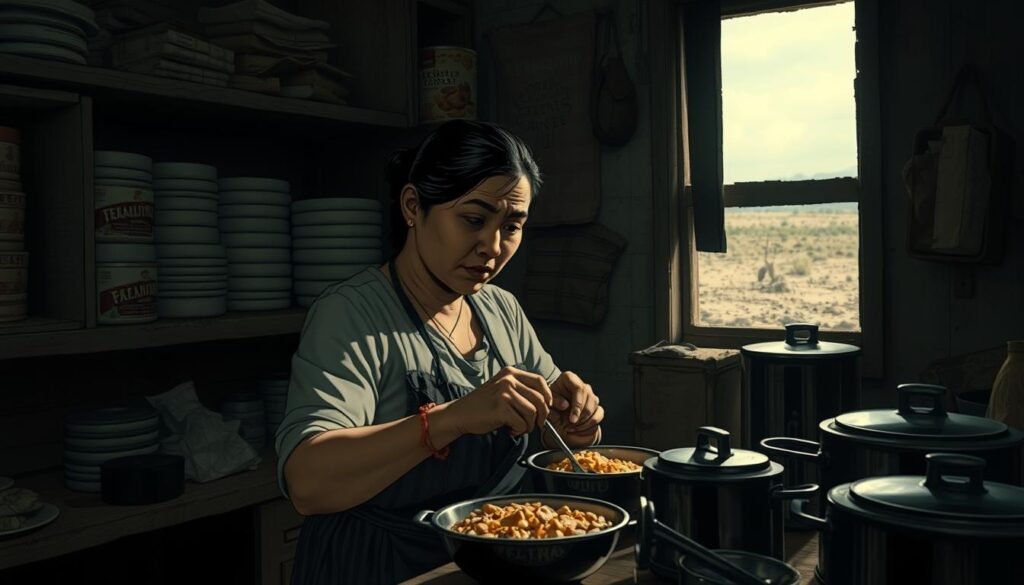
Wartime Origins and Early Practices
In times of crisis, nations faced severe shortages of resources. During World War I, countries like Britain introduced rationing to manage limited supplies. This practice expanded during World War II, affecting the entire world. Governments issued a specific number of coupons or stamps to individuals, ensuring controlled access to essentials like sugar, meat, and fats.
For example, in the Philippines, the Japanese occupation led to strict controls on food distribution. Each person received a set amount of goods, forcing families to adapt to new dietary habits. This system was designed to address the imbalance between demand and supply, but it often resulted in widespread malnutrition.
Evolution into Peacetime Measures
Once the wartime emergency subsided, rationing systems transitioned into long-term policies. Governments recognized the need to maintain stability in food distribution. In many cases, public demand drove adjustments in supply chains. For instance, Britain continued rationing certain items like bread and potatoes well into the late 1940s.
These measures were supported by historical evidence, such as ration books and propaganda campaigns. They encouraged controlled consumption and discouraged hoarding. Over time, these practices became standard policy measures, influencing modern food security strategies.
| Item | Ration Amount (WWII) | Duration |
|---|---|---|
| Sugar | 8 oz per week | 1942-1947 |
| Meat | 64 stamps per month | 1943-1945 |
| Cheese | 2 oz per week | 1943-1945 |
| Butter | 2 oz per week | 1940-1954 |
Japanese Food Rationing Policies and Practices
The Japanese government implemented strict food control measures during WWII to manage resources. These policies aimed to ensure fair distribution but often prioritized military needs over civilian life. The scarcity of essential goods forced the government to regulate access, reshaping daily routines in occupied territories.

Government Initiatives in Japan
During the war, the Japanese government introduced a system of coupons and stamps to control food distribution. Civilians received limited rations, often as low as 297 grams per person daily. This approach was designed to stabilize the market but led to widespread shortages and malnutrition.
Military personnel, however, were given priority. Soldiers consumed protein-rich meals like Japanese curry and beef stew, while civilians struggled with reduced caloric intake. By July 1945, staple rations had been cut by 20%, further straining public life.
Colonial Influences on Distribution
In occupied territories like the Philippines, colonial strategies shaped food allocation. The Japanese government monopolized basic foodstuffs, leading to inflation and extreme scarcity. Regional dietary preferences were often ignored, forcing locals to adapt to new food sources.
For example, rice imports dropped significantly, from 1,675,000 tons in 1940 to just 236,000 tons by 1945. This decline forced Filipinos to rely on alternative staples like root crops and urban farming. These policies not only disrupted the market but also altered traditional diets across the nation.
Filipino Dietary Traditions Before Rationing
Before external influences reshaped their diets, Filipinos enjoyed a rich culinary heritage rooted in local traditions. Their meals were deeply connected to the land and sea, reflecting the country’s agricultural abundance and diverse ecosystems.
Staple foods like rice, fish, and vegetables formed the backbone of daily meals. Dishes such as sinigang (sour soup) and adobo (marinated meat) were household favorites. These recipes relied on fresh, locally sourced ingredients, showcasing the importance of seasonal produce.

The price and availability of goods played a significant role in shaping dietary choices. For example, coastal communities had easy access to seafood, while inland regions depended more on root crops and poultry. This regional diversity enriched the Filipino food culture.
Meals were more than just sustenance; they were a way to bring families together. Shared dishes like lechon (roast pig) and pancit (noodles) were central to celebrations and gatherings. This tradition of communal eating highlighted the cultural significance of food in Filipino households.
Understanding these dietary traditions provides valuable context for how Filipinos adapted to later challenges. Their reliance on local production and seasonal ingredients set the stage for resilience in the face of scarcity. To learn more about the historical influences on Filipino culture, visit this resource.
Transformations in Filipino Diets Due to Japanese Rationing
The Japanese occupation brought significant changes to Filipino diets, reshaping culinary traditions and ingredient availability. With strict controls on food distribution, Filipinos faced a need to adapt quickly. This period saw a shift in what was accessible, forcing households to rethink their daily meals.
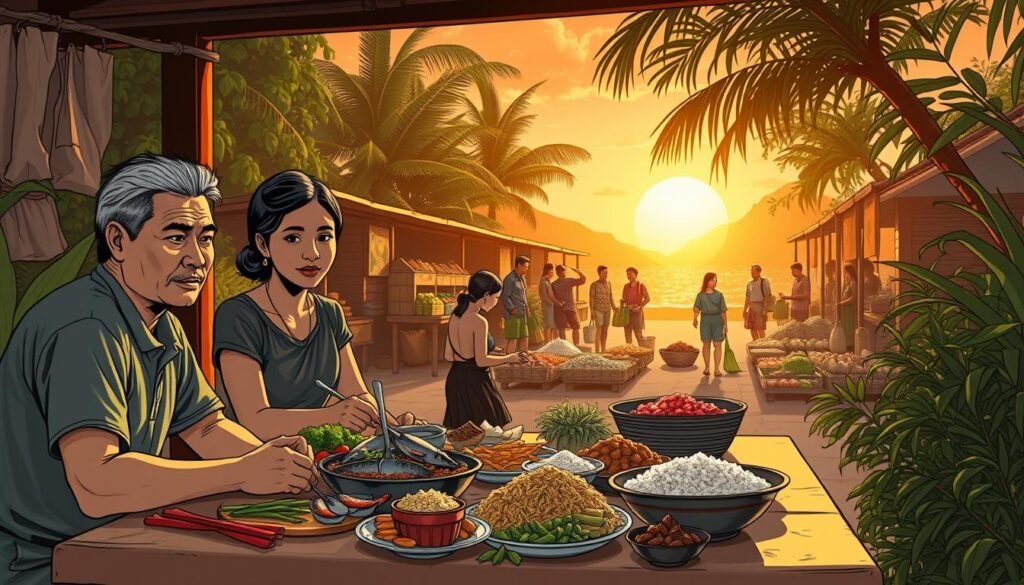
Shift in Ingredient Availability
During this time, staple foods like rice became scarce. The state imposed restrictions limited access to traditional ingredients, pushing Filipinos to find alternatives. Root crops like cassava and sweet potatoes became essential substitutes. These changes addressed the need for sustenance while maintaining a balanced diet.
Urban farming also gained popularity as families grew their own vegetables. This shift not only provided food but also fostered resilience in the face of scarcity. The priority was to ensure that essential nutrients were still part of daily meals, even with limited resources.
Adaptation of Traditional Recipes
Filipino cooks demonstrated remarkable creativity by modifying traditional recipes. Dishes like sinigang and adobo were reinvented using available ingredients. For example, fish was often replaced with locally sourced vegetables or poultry.
These adaptations preserved cultural flavors while addressing the need for variety. Practical examples include using coconut milk to enhance dishes when dairy was unavailable. Such innovations highlighted the resilience of Filipino culinary traditions.
Despite the challenges, these changes ensured that meals remained nutritious and satisfying. The priority on essential nutrients and accessible food items helped families navigate this difficult period. This adaptability continues to influence Filipino cuisine today.
Socioeconomic Impacts on the Philippine Market
The Japanese occupation of the Philippines during WWII disrupted the nation’s economy, leading to severe market challenges. Supply chains were strained, and price controls became a necessary way to manage scarce resources. This period marked a time of significant hardship for both merchants and consumers.
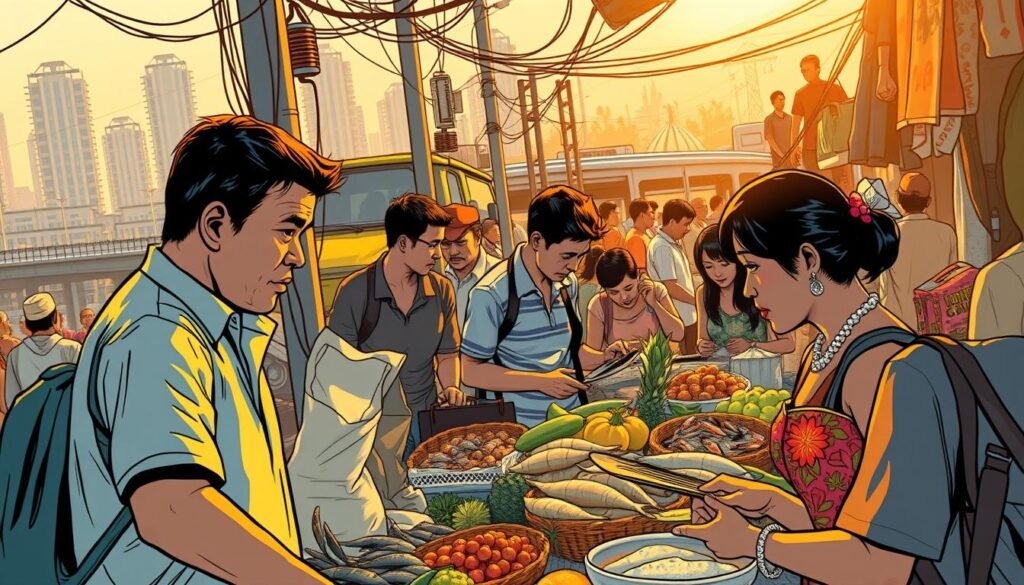
Supply Shortages and Price Fluctuations
During the occupation, the Philippine market faced severe shortages of essential goods. Rice, a staple food, became scarce, forcing people to rely on alternatives like root crops. The time it took to stabilize the market was prolonged, as disruptions persisted throughout the war.
Price controls were implemented to curb inflation, but they often failed to address the root causes of shortages. For example, in 1944, inflation reached 60% due to the devaluation of Japanese-issued currency. A kilogram of camote (sweet potato) cost around 1,000 Mickey Mouse pesos, reflecting the dire economic situation.
- Analyze how Japanese policies led to significant shortages in the Philippine market.
- Examine the fluctuations in prices in response to disrupted supply chains.
- Explain the effect of time on market stabilization as shortages persisted.
- Discuss the economic way in which control measures were implemented to manage scarce goods.
- Evaluate the broader impact on local businesses and consumer spending habits.
Local businesses struggled to adapt to these challenges. Many were forced to close, while others found innovative ways to survive. For instance, urban farming became a popular solution to address food shortages. This shift not only provided sustenance but also fostered resilience in the face of scarcity.
Despite these efforts, the economic impact was profound. Consumer spending habits changed drastically, with families prioritizing essential goods over luxury items. The time it took for the market to recover was lengthy, leaving a lasting legacy on the Philippine economy.
Rationing: Balancing Supply, Demand, and Cultural Legacy
The concept of balancing supply and demand has long been a cornerstone of economic policy. During periods of scarcity, governments have introduced new legal frameworks to ensure fair distribution. These measures often aimed to protect cultural legacies while addressing immediate needs.
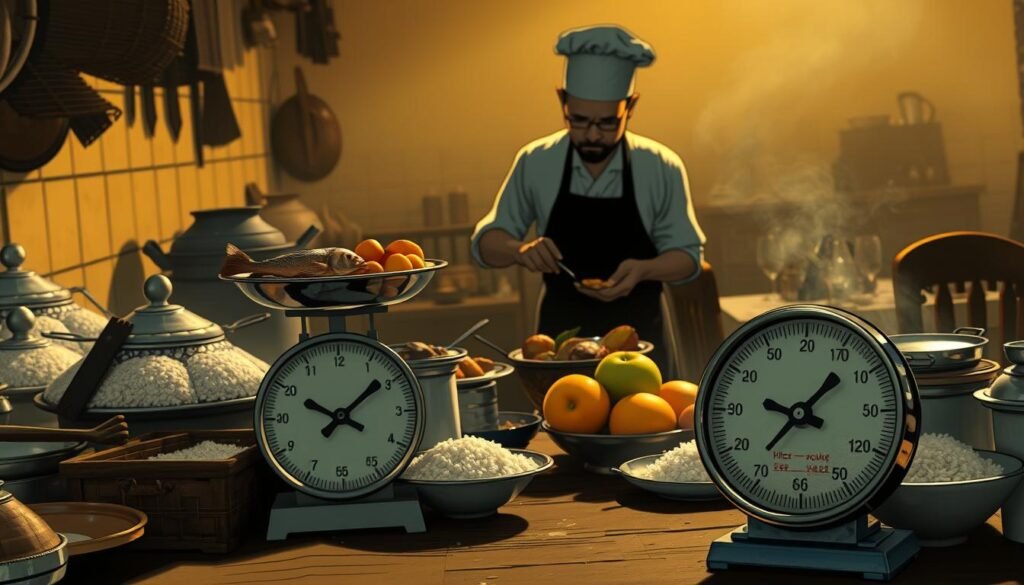
One key tool was the creation of official lists detailing rationed items. These lists were based on criteria like nutritional value and availability. For example, during WWII, sugar and rice were prioritized due to their importance in daily diets. Such policies were designed to stabilize markets and prevent hoarding.
Legal frameworks played a crucial role in enforcing these measures. Governments enacted laws to regulate production and distribution. These laws ensured that essential goods reached those in need, even in challenging times. For instance, in Japan, strict controls were placed on rice and sugar to manage shortages.
Today, these historical policies continue to influence modern approaches. Contemporary strategies often draw from past lessons to balance supply and demand. For example, during the COVID-19 pandemic, many countries implemented new measures to ensure food security. These included updated lists of essential goods and revised laws to support fair distribution.
By examining these policies, we gain valuable insights into how societies adapt to scarcity. Historical examples show the importance of protecting cultural traditions while ensuring resource fairness. These lessons remain relevant as we navigate future challenges in food security and economic stability.
Government and Legal Framework in Food Distribution
The wartime era saw governments enforce strict legal frameworks to manage food distribution. These measures aimed to ensure fair access to limited resources while maintaining order. Legal protocols became essential tools to address the challenges of scarcity and prevent hoarding.
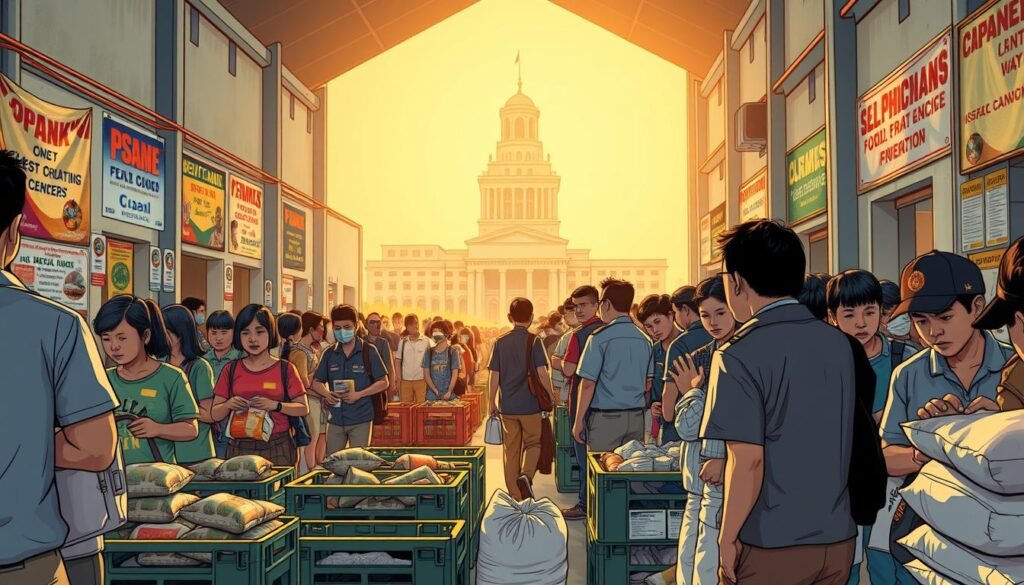
Regulatory Measures and Legislation
Governments introduced comprehensive laws to control the allocation of essential goods. For example, ration books and coupons were issued to regulate access. Each person received a fair share of supplies, ensuring that no individual was left without basic necessities.
In one notable case, the Japanese government imposed strict penalties for black market activities. Violators faced fines or imprisonment, deterring illegal trade. These measures were critical to maintaining the integrity of the distribution system.
“Legal frameworks were not just about control; they were about survival. They ensured that resources reached those who needed them most.”
Legal innovation also emerged during this period. Governments developed new methods to track and allocate resources efficiently. For instance, digital records replaced manual logs in some regions, improving accuracy in distribution.
| Legal Measure | Purpose | Outcome |
|---|---|---|
| Ration Coupons | Control access to goods | Fair share for all |
| Black Market Penalties | Deter illegal trade | Reduced hoarding |
| Digital Tracking | Improve accuracy | Efficient distribution |
These legal frameworks not only addressed immediate needs but also laid the groundwork for future policies. They demonstrated the importance of balancing supply and demand while protecting cultural traditions. This historical approach continues to influence modern food security strategies.
Community Resilience and Adaptive Strategies
Grassroots initiatives became a lifeline for many Filipinos facing food shortages. During the Japanese occupation, communities developed innovative methods to overcome product shortages and adapt to strict limits on essential goods. These efforts not only ensured survival but also strengthened social bonds and fostered self-sufficiency.
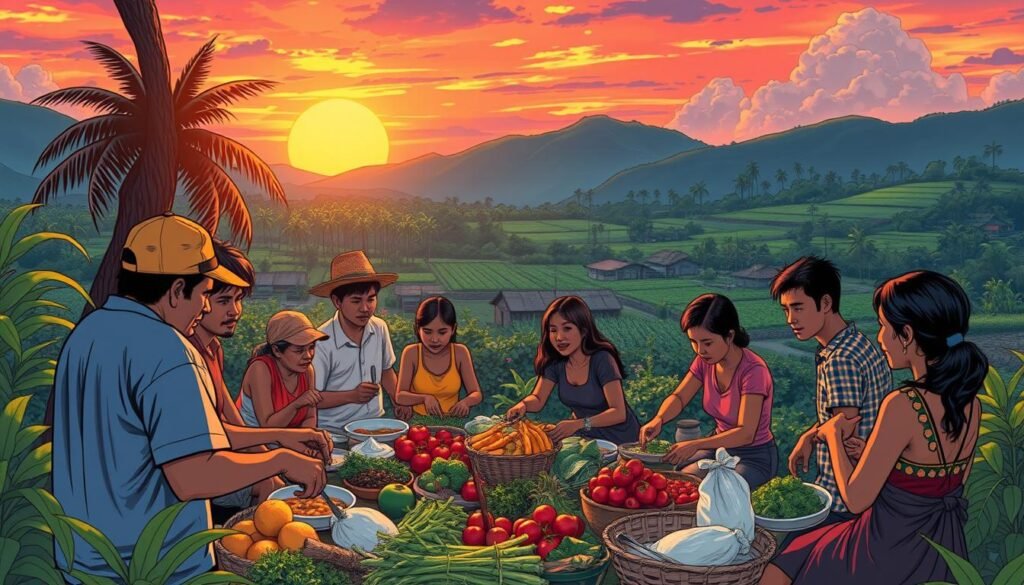
Home Gardening and Victory Gardens Revival
One of the most effective strategies was the revival of home gardening. Families transformed small plots of land into productive gardens, growing vegetables and root crops. This work reduced dependence on government-controlled supplies and provided a steady source of nutrition.
Victory gardens, inspired by similar efforts in other countries, became a symbol of resilience. These gardens were not just about food production; they represented hope and determination in the face of adversity. Communities shared seeds, tools, and knowledge, ensuring everyone could participate.
Local Market Innovations
Local markets also adapted to the challenges of scarcity. Vendors began offering alternative products, such as preserved foods and locally sourced ingredients. These innovations provided access to essential items despite the limits imposed by wartime policies.
Community-led initiatives, such as barter systems, further supplemented the national food system. These efforts highlighted the work of local groups in creating sustainable solutions. By pooling resources and sharing expertise, communities ensured that no one was left without basic necessities.
- Home gardening and victory gardens addressed product shortages effectively.
- Local markets adapted by offering alternative goods and services.
- Community work reduced dependence on external supply chains.
- Innovative strategies fostered economic and social resilience.
These adaptive strategies not only helped Filipinos survive but also laid the foundation for future resilience. To learn more about how communities build resilience, explore community resilience strategies.
Historical Lessons from Global Rationing Examples
Global rationing systems during WWII offer valuable insights into managing scarcity and ensuring public welfare. These systems, implemented in countries like the United States and Britain, highlight the importance of structured service delivery and care for vulnerable populations. By examining these examples, we can better understand the challenges and successes of wartime resource management.
Comparisons with WWII and Postwar Rationing
In the United States, the Office of Price Administration introduced ration books to control access to essential goods like sugar and meat. This system ensured that every household received a fair home allocation, regardless of income. Similarly, Britain’s Ministry of Food prioritized public health by providing school meals that met half of children’s daily nutritional needs.
In contrast, Japanese rationing in the Philippines focused on military priorities, often neglecting civilian needs. This disparity underscores the importance of equitable service measures in maintaining public trust and health during crises.
“Effective rationing systems must balance supply and demand while safeguarding the well-being of all citizens.”
Sustainability and Challenges
Rationing programs faced significant challenges, including black markets and public resistance. In Britain, for example, approval rates for rationing varied by occupation and location. Despite these hurdles, the system succeeded in reducing malnutrition rates, demonstrating the potential of well-managed resource distribution.
Long-term lessons from these programs emphasize the need for adaptable policies. For instance, the revival of victory gardens in the U.S. showcased how community-driven initiatives can supplement national care efforts. These strategies remain relevant today, as seen in modern food security policies.
- Compare Japanese rationing with U.S. and British systems.
- Highlight the role of service measures in ensuring public health.
- Evaluate the sustainability of global rationing programs.
- Discuss the long-term impact on food distribution and public care.
By learning from these historical examples, we can develop more resilient systems to address future challenges. For more insights, explore the U.S. rationing system during WWII.
Impacts on Public Health and Nutrition
Nutritional standards and public health were deeply affected by the limitations imposed during periods of scarcity. The reduction in essential resources led to significant declines in caloric intake and overall well-being. For example, during WWII, the average daily caloric intake in the Philippines dropped to 1,500 calories, far below the recommended level.
This decline had severe consequences, particularly for vulnerable groups like children and the elderly. Infant mortality rates rose sharply, and life expectancy decreased by nearly five years. The cost of living also increased, as families struggled to afford even basic necessities.
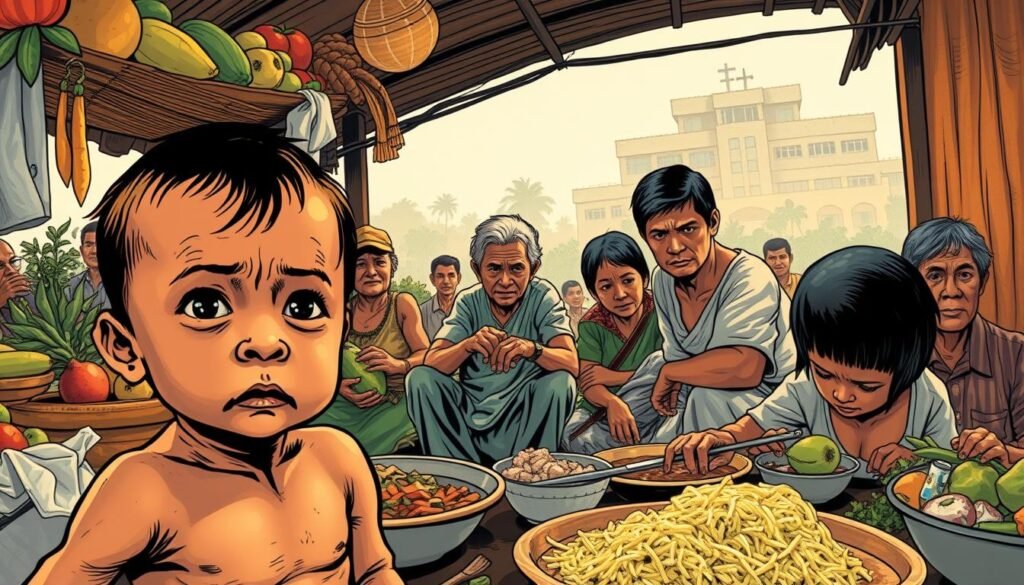
Government efforts to address these challenges included the distribution of fortified foods and vitamins. These measures aimed to supplement diets and prevent widespread malnutrition. However, the limited availability of these resources meant that many still suffered from deficiencies.
Historical data shows both positive and negative outcomes of enforced rationing. While it ensured fair distribution, it also led to long-term health issues. For instance, studies indicate that malnutrition during this period contributed to stunted growth in children.
“The health impacts of rationing were profound, highlighting the need for balanced policies that prioritize public well-being.”
Comparing pre- and post-rationing periods reveals lasting effects on population health. While some communities adapted through innovative strategies, others faced prolonged challenges. To learn more about the role of military rations in shaping dietary outcomes, explore this resource.
These historical lessons underscore the importance of equitable resource allocation and sustainable food policies. By addressing the root causes of scarcity, governments can better protect public health and ensure a higher level of well-being for all.
Long-Term Effects on Food Culture and National Identity
The scarcity of resources during wartime forced Filipinos to rethink their culinary traditions, leaving a lasting impact on their food culture. The allocation of limited ingredients led to innovative adaptations that continue to shape Filipino cuisine today. This period of hardship not only transformed recipes but also strengthened the nation’s identity through resilience and creativity.
Culinary Shifts and Recipe Innovations
During times of scarcity, Filipinos turned to alternative ingredients to sustain their diets. Root crops like cassava and sweet potatoes became staples, replacing rice in many traditional dishes. This shift in allocation of resources encouraged cooks to experiment, resulting in new recipes that are now celebrated as part of Filipino heritage.
For example, dishes like ginataang bilo-bilo (glutinous rice balls in coconut milk) were adapted to include locally available ingredients. These innovations not only addressed immediate needs but also enriched the culinary landscape. As one article notes, “Filipino cuisine is a testament to the creativity born out of necessity.”
Medical experts, or doctors, also played a role in promoting healthier substitutions. They encouraged the use of nutrient-rich alternatives to combat malnutrition. This guidance helped families maintain balanced diets despite the challenges of scarcity.
- Root crops replaced rice as a primary staple.
- Traditional recipes were adapted to include available ingredients.
- Medical experts promoted healthier substitutions to improve nutrition.
- These changes contributed to a unique national culinary identity.
The long-term effects of these adaptations are still evident today. Filipino cuisine now reflects a blend of tradition and innovation, shaped by the challenges of the past. To explore more about the cultural impact of food scarcity, visit this resource.
In conclusion, the allocation of scarce resources during wartime not only reshaped Filipino food culture but also strengthened national identity. Through resilience and creativity, Filipinos turned adversity into a culinary legacy that continues to thrive.
Modern Perspectives and Policy Reforms in Food Security
Modern food security policies are shaped by historical lessons and evolving challenges. Today, governments and organizations are working to ensure that every individual has access to nutritious food. This effort is driven by advancements in medicine and nutrition science, which inform new regulations and strategies.
One key focus is on balancing supply and demand in the country. Historical practices, such as wartime rationing, offer valuable insights. For example, during WWII, strict controls ensured fair distribution but often led to malnutrition. Today, policies aim to avoid such pitfalls by prioritizing access to diverse and balanced diets.
Current reforms emphasize scalability and efficiency. Technology plays a crucial role in modernizing food distribution systems. Data analytics helps identify gaps and improve resource allocation. For instance, digital platforms track food supply chains, ensuring that no individual is left behind.
Another priority is fairness. Policies now aim to protect the rights of vulnerable populations. For example, subsidies and food assistance programs ensure that low-income families have access to essential goods. These measures are informed by lessons from the past, where inequitable distribution caused widespread hardship.
“The integration of technology and policy is key to building resilient food systems.”
In the country, efforts to improve food security include urban farming and community gardens. These initiatives not only provide fresh produce but also empower communities. By combining traditional practices with modern medicine and technology, the nation is creating sustainable solutions.
| Policy Focus | Historical Example | Modern Reform |
|---|---|---|
| Fair Distribution | Wartime rationing | Subsidies for low-income families |
| Technology Integration | Manual tracking systems | Digital supply chain analytics |
| Community Empowerment | Victory gardens | Urban farming initiatives |
These reforms highlight the importance of learning from history. By addressing past challenges, the country is building a more equitable and sustainable food system. This approach ensures that every individual has the access they need to thrive.
Reflections on Food Scarcity and National Identity
Food scarcity has long shaped the way societies adapt and evolve, leaving a lasting imprint on national identity. From historical hardships to modern solutions, the struggle for sustenance has often been a defining force in shaping cultural practices and societal norms. In the Philippines, periods of scarcity have not only tested resilience but also redefined the nation’s relationship with food.
Over the years, various policy approaches have been implemented to address food shortages. These measures have ranged from wartime rationing to modern initiatives promoting sustainability. Each type of intervention reflects the evolving understanding of resource management and public welfare.
Societal Changes in Daily Life
Food scarcity has profoundly impacted daily life, forcing communities to rethink their habits and traditions. In the Philippines, the shift from rice to root crops during shortages became a symbol of adaptability. Families turned to urban farming and local markets, fostering a sense of united effort in the face of adversity.
These changes extended beyond the kitchen. Public health initiatives, informed by advances in policy and medicine, aimed to mitigate the effects of malnutrition. Schools introduced meal programs, ensuring children received essential nutrients despite limited resources.
Future Directions for Sustainable Food Systems
Looking ahead, the lessons of the past inform modern strategies for sustainable food systems. Governments and organizations are now prioritizing equitable policy measures to ensure access to nutritious food for all. Innovations in agriculture, such as vertical farming and crop diversification, are reshaping the way we think about food production.
Community-driven initiatives, like urban gardens and cooperative markets, continue to play a vital role. These efforts not only address immediate needs but also strengthen the united spirit of resilience that defines the Filipino identity.
| Year | Policy Milestone | Impact |
|---|---|---|
| 1942 | Wartime Rationing | Shift to alternative staples |
| 2000 | Urban Farming Promotion | Increased local food production |
| 2020 | Sustainable Agriculture Act | Focus on long-term food security |
“The resilience of a nation is often measured by its ability to adapt to scarcity and emerge stronger.”
By learning from history, the Philippines continues to build a future where food scarcity is no longer a barrier to progress. The united efforts of communities, supported by innovative policy measures, ensure that the nation’s identity remains rooted in resilience and pride.
Conclusion
The legacy of Japanese-imposed food controls during WWII continues to shape Filipino food culture and policy today. This historical period forced Filipinos to adapt, fostering resilience and creativity in the face of scarcity. The effort to survive under strict limitations not only transformed diets but also strengthened the national identity.
Modern food security policies draw lessons from this era, emphasizing equitable distribution and sustainable practices. The collective effort of communities during wartime laid the foundation for today’s innovative solutions, such as urban farming and community gardens. These initiatives reflect the enduring spirit of resilience that defines the Filipino people.
As we look to the future, outdated systems must come to an end. Embracing sustainable practices and inclusive policies will ensure that no one is left behind. The lessons of the past remind us that food security is not just about access but also about fairness and adaptability.
To learn more about the broader implications of resource management, explore this resource. By understanding history, we can build a more equitable and resilient future for all.
FAQ
What was the historical context of food rationing in Japan and the Philippines?
Food rationing began during wartime as a way to manage limited resources. It later evolved into peacetime measures to ensure fair distribution of goods across the population.
How did Japanese rationing policies affect Filipino diets?
Japanese rationing led to a shift in ingredient availability, forcing Filipinos to adapt traditional recipes and explore new ways to sustain their dietary needs.
What were the socioeconomic impacts of rationing on the Philippine market?
Rationing caused supply shortages and price fluctuations, disrupting the local economy and making essential goods harder to access for many people.
How did the Filipino community adapt to food shortages during rationing?
Communities turned to home gardening, revived victory gardens, and innovated local markets to cope with limited resources and maintain food security.
What were the long-term effects of rationing on Filipino food culture?
Rationing influenced culinary shifts and recipe innovations, leaving a lasting impact on national identity and food traditions in the Philippines.
How did government policies shape food distribution during rationing?
Governments implemented regulatory measures and legislation to manage resource allocation, ensuring fair distribution and addressing supply chain challenges.
What lessons can be learned from global rationing examples?
Comparisons with WWII and postwar rationing highlight the importance of balancing supply, demand, and cultural legacy to build resilient food systems.
How did rationing impact public health and nutrition in the Philippines?
Limited access to diverse foods during rationing affected public health, leading to nutritional challenges and the need for adaptive strategies.
What modern perspectives exist on food security and policy reforms?
Modern approaches focus on sustainable food systems, equitable distribution, and innovative policies to prevent future shortages and ensure food access for all.
How did food scarcity shape societal changes and national identity?
Food scarcity during rationing influenced daily life, fostering resilience and shaping a collective identity rooted in adaptation and resourcefulness.
Source Links
- Under the enemy’s yoke: The POW experience in Japan
- Food and Living Standards in Urban Southeast Asia (Chapter 8) – World War II and Southeast Asia
- Food Rationing on the World War II Home Front (U.S. National Park Service)
- Rationing | The National WWII Museum | New Orleans
- Food Rationing during World War Two
- Feeding the Army: The Adaptation of Japanese Military Cuisine and Its Impact on the Philippines
- Japanese and Filipino Youth in the Second World War · USU Digital Exhibits
- Shortages, Substitutes and Rationing (Chapter 6) – World War II and Southeast Asia
- Liberation of the Philippines 1945 | The National WWII Museum | New Orleans
- Food supply Java 1940-50
- Economic history of the Philippines
- Microsoft Word – Final PMR-Credit Decision and Reationing Rules.doc
- From grain to gasoline: a brief world history of rationing
- Labor Rationing
- The basics of food security (and how it’s tied to everything)
- Implications of Economic Policy for Food Security : A Training Manual
- untitled
- Unlocking Community Resilience: Innovative Strategies to Access
Climate Adaptation Funding - Rationing: a fairer way to fight climate change?
- Wartime rationing: Lessons from History update – FasterCapital
- Frontiers | Rationing in healthcare—a scoping review
- How Our Food System Affects Public Health
- A Food Nation Without Culinary Heritage? Gastronationalism in Sweden
- “Luxury Feeding” and War Rations: Food Writing at Midcentury (Chapter 3) – Global Appetites
- Food Security — Special Report on Climate Change and Land
- Research on food security issues considering changes in rainfall – Scientific Reports
- The impact that cultural food security has on identity and well-being in the second-generation U.S. American minority college students
- Adopting a Territorial Approach to Food Security and Nutrition Policy
- Unravelling the Paradoxical Seasonal Food Scarcity in a Peasant Microregion of Mexico
- Rationing in health systems: A critical review
- Conclusion (Chapter 9) – Law, Legitimacy and the Rationing of Health Care

